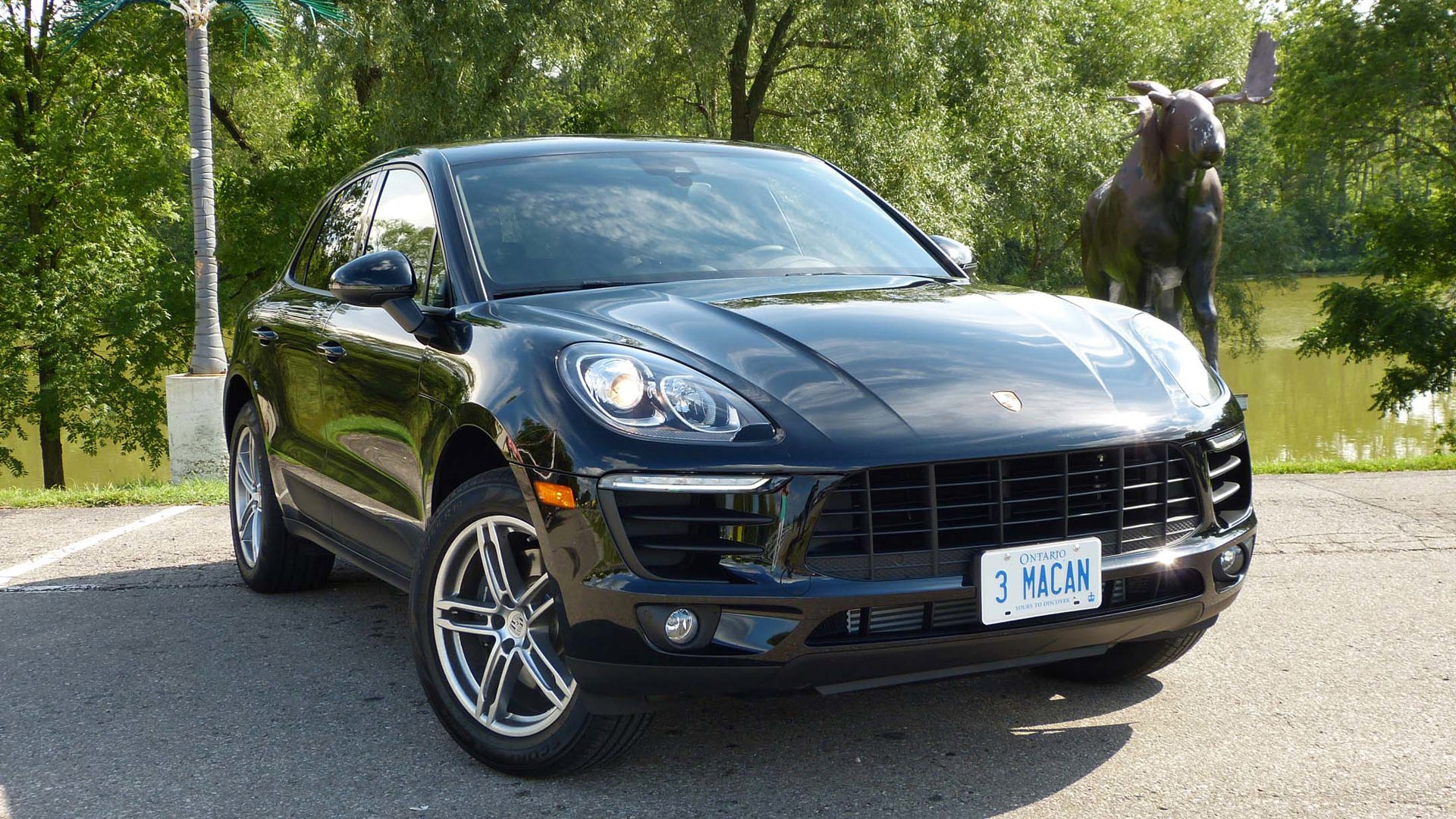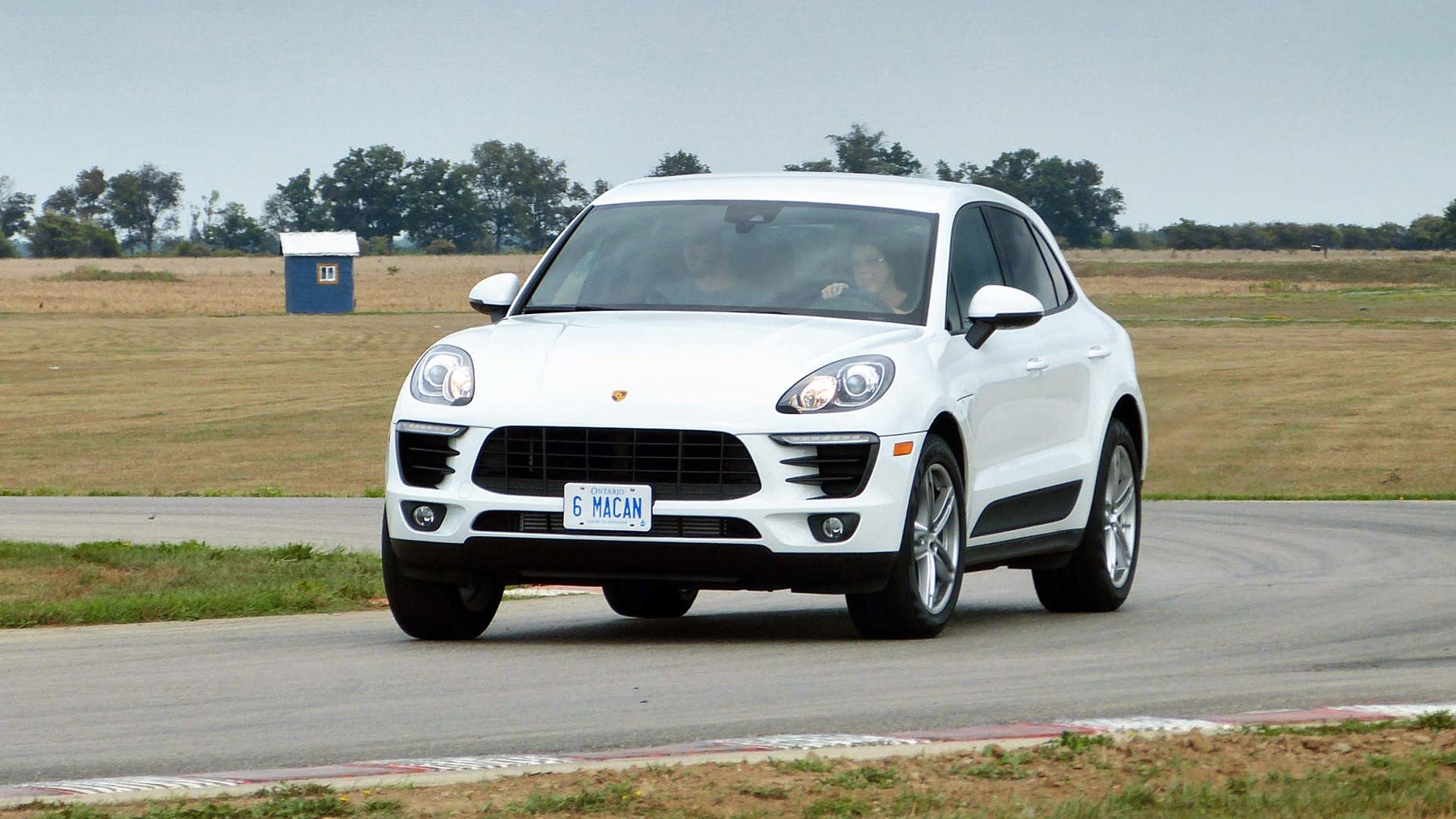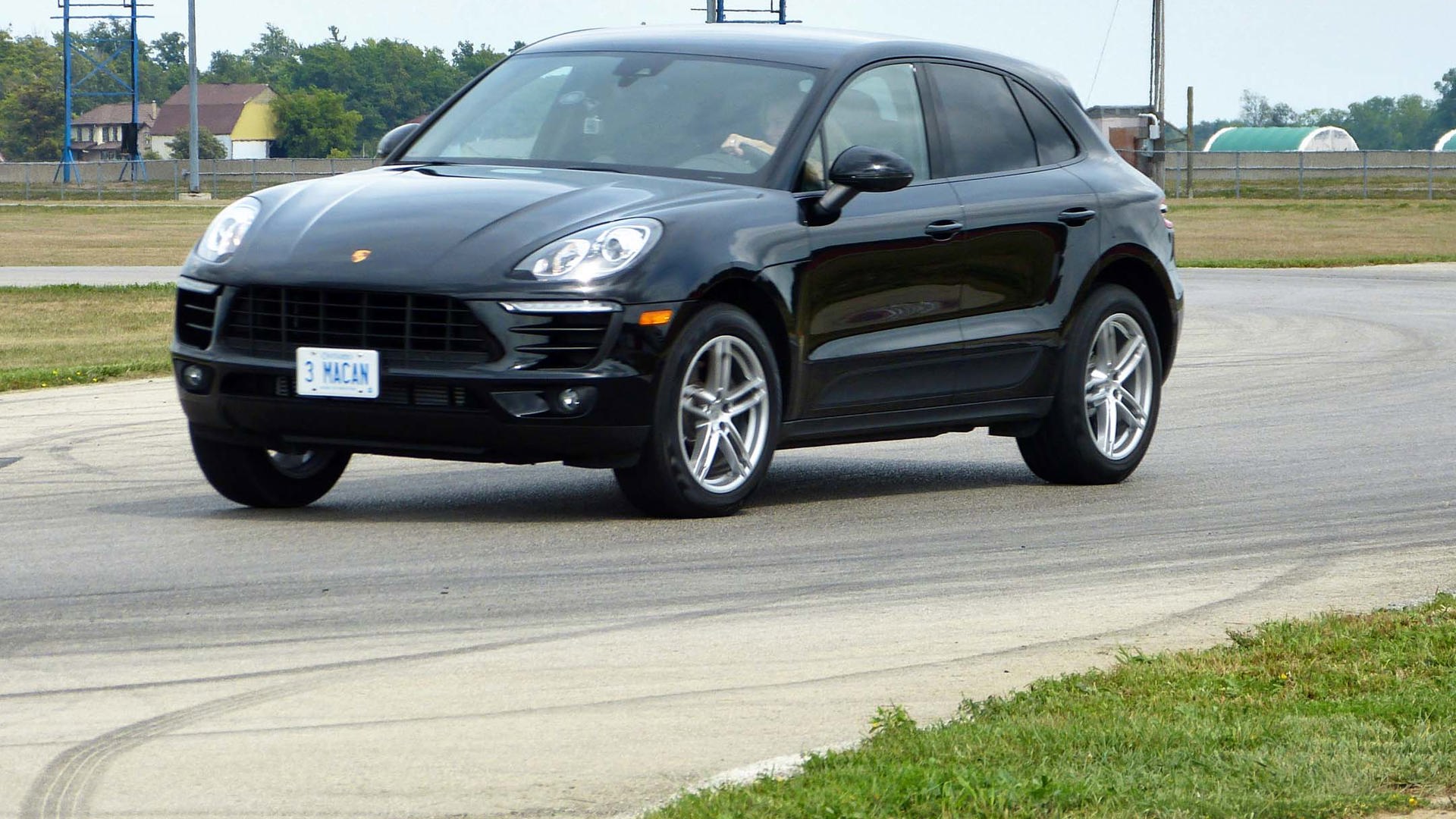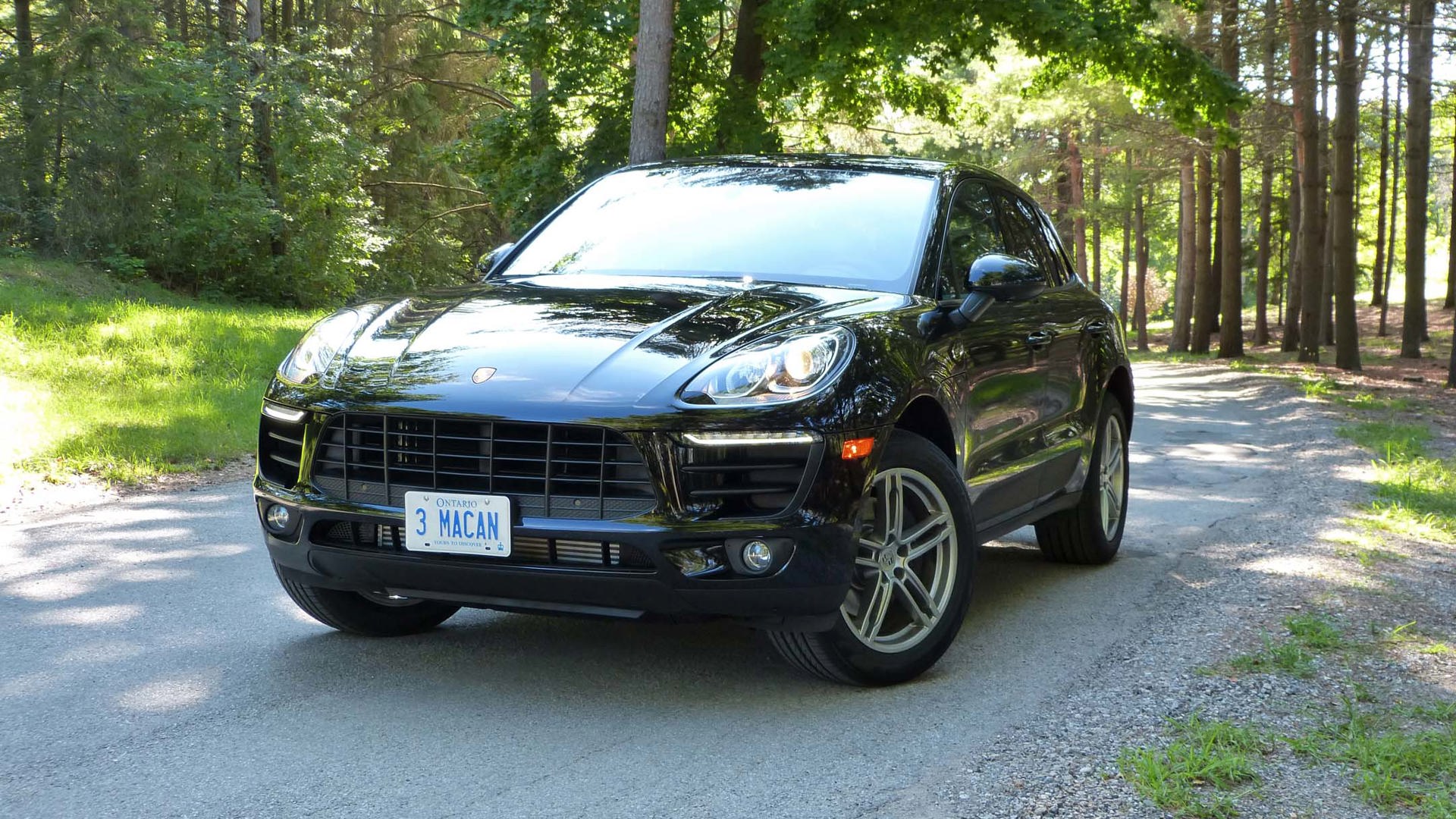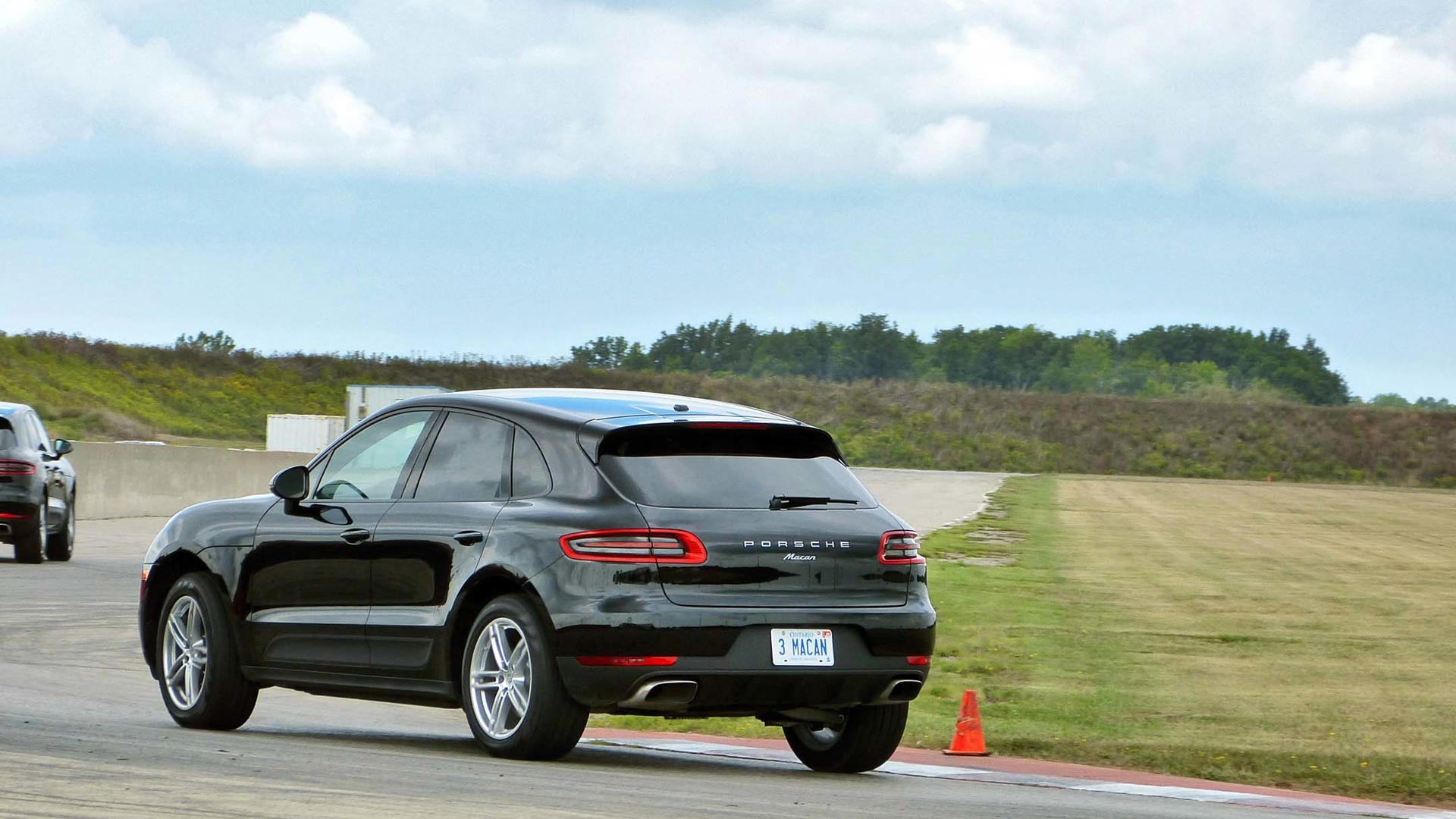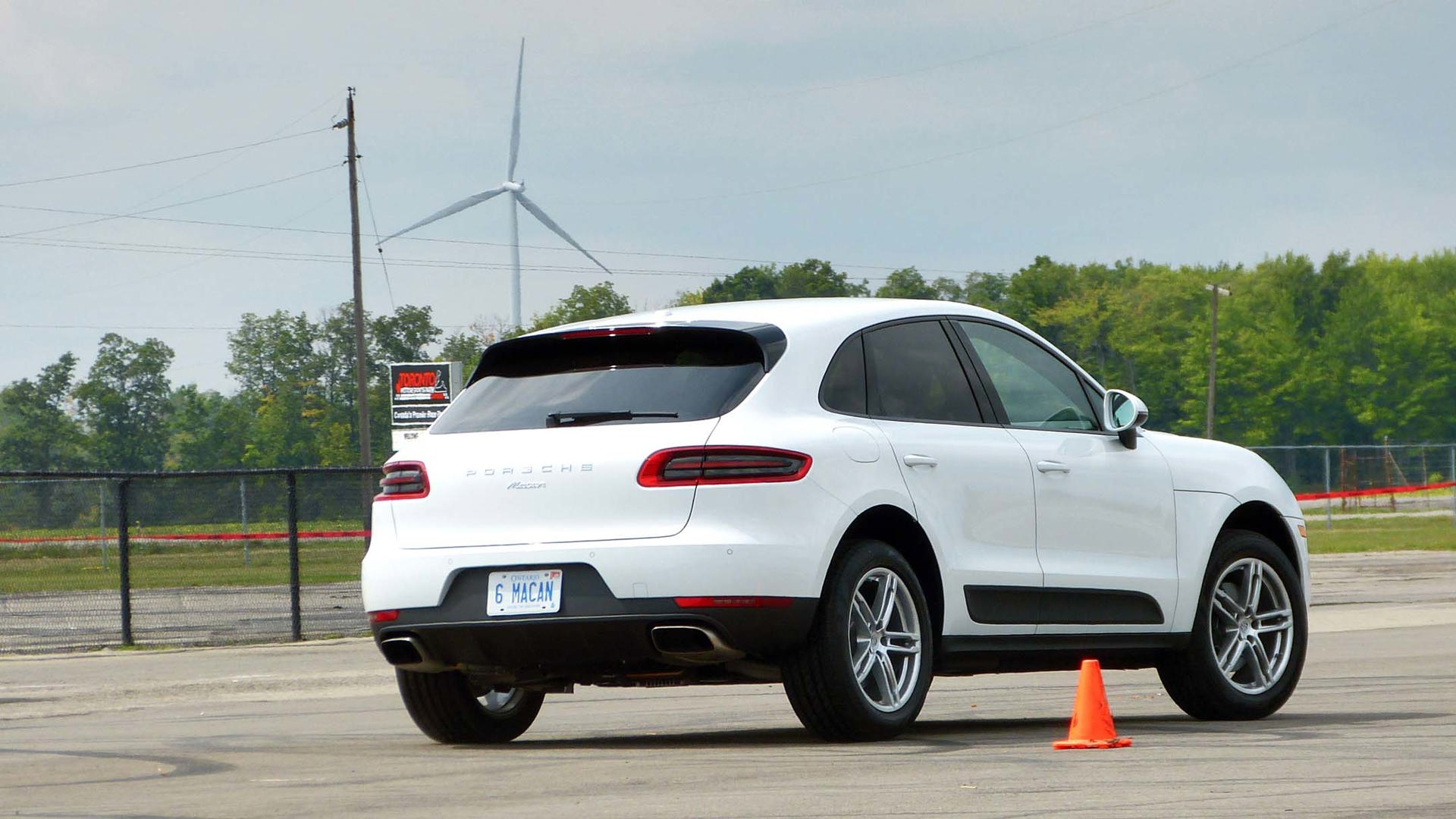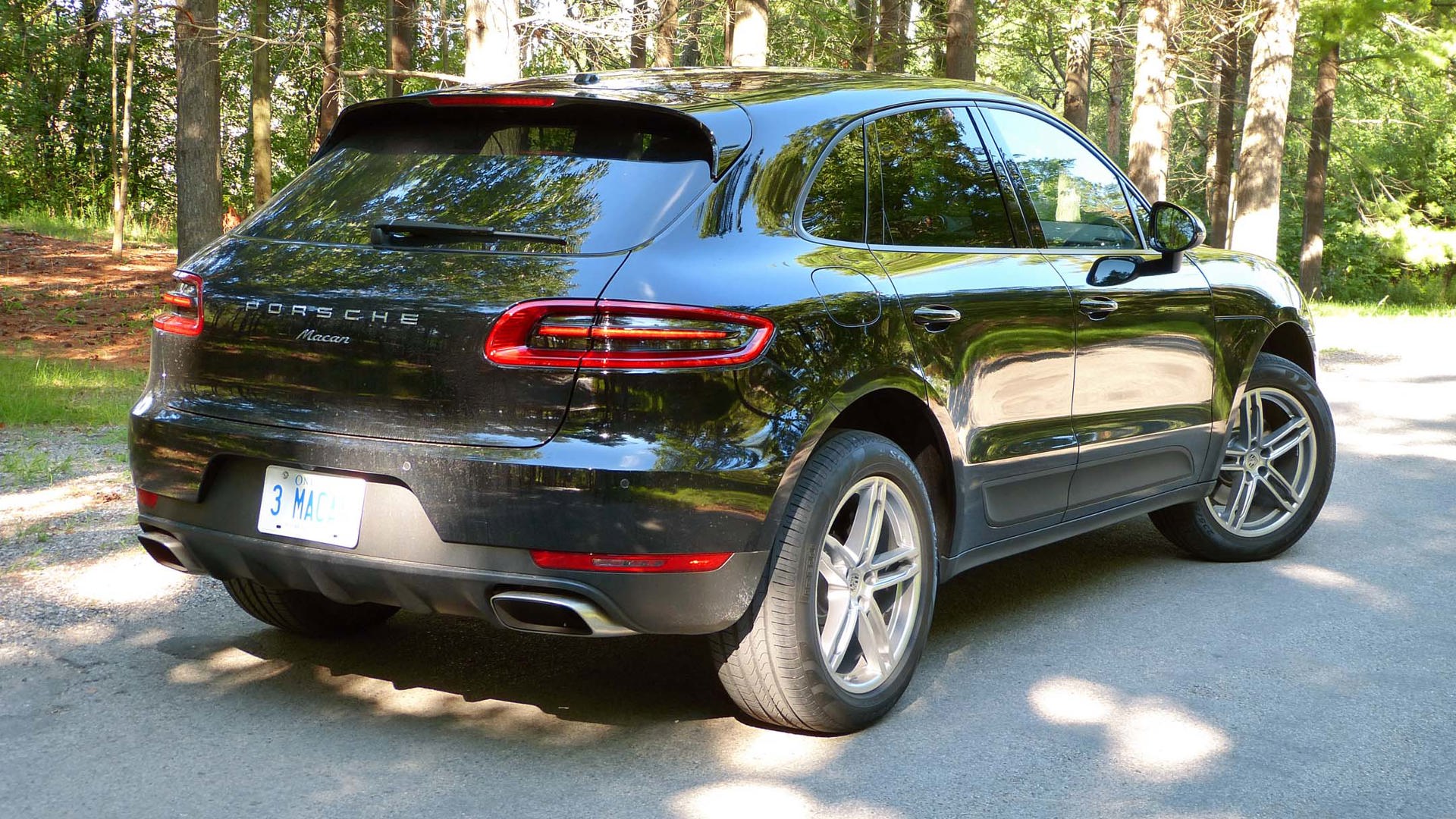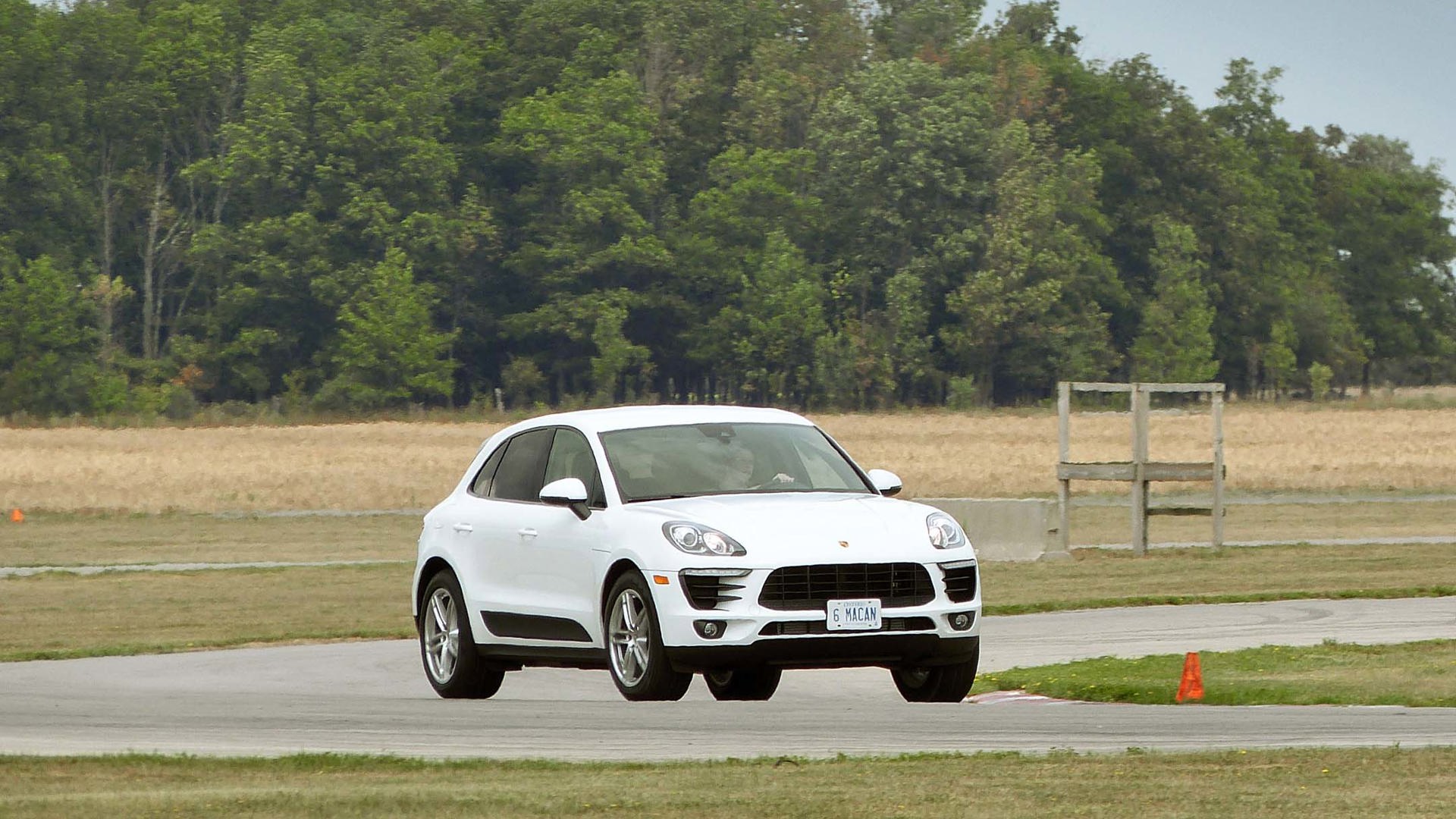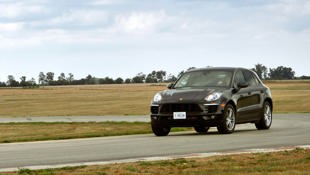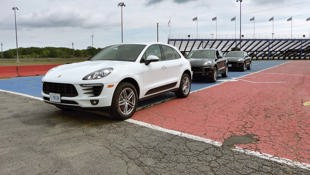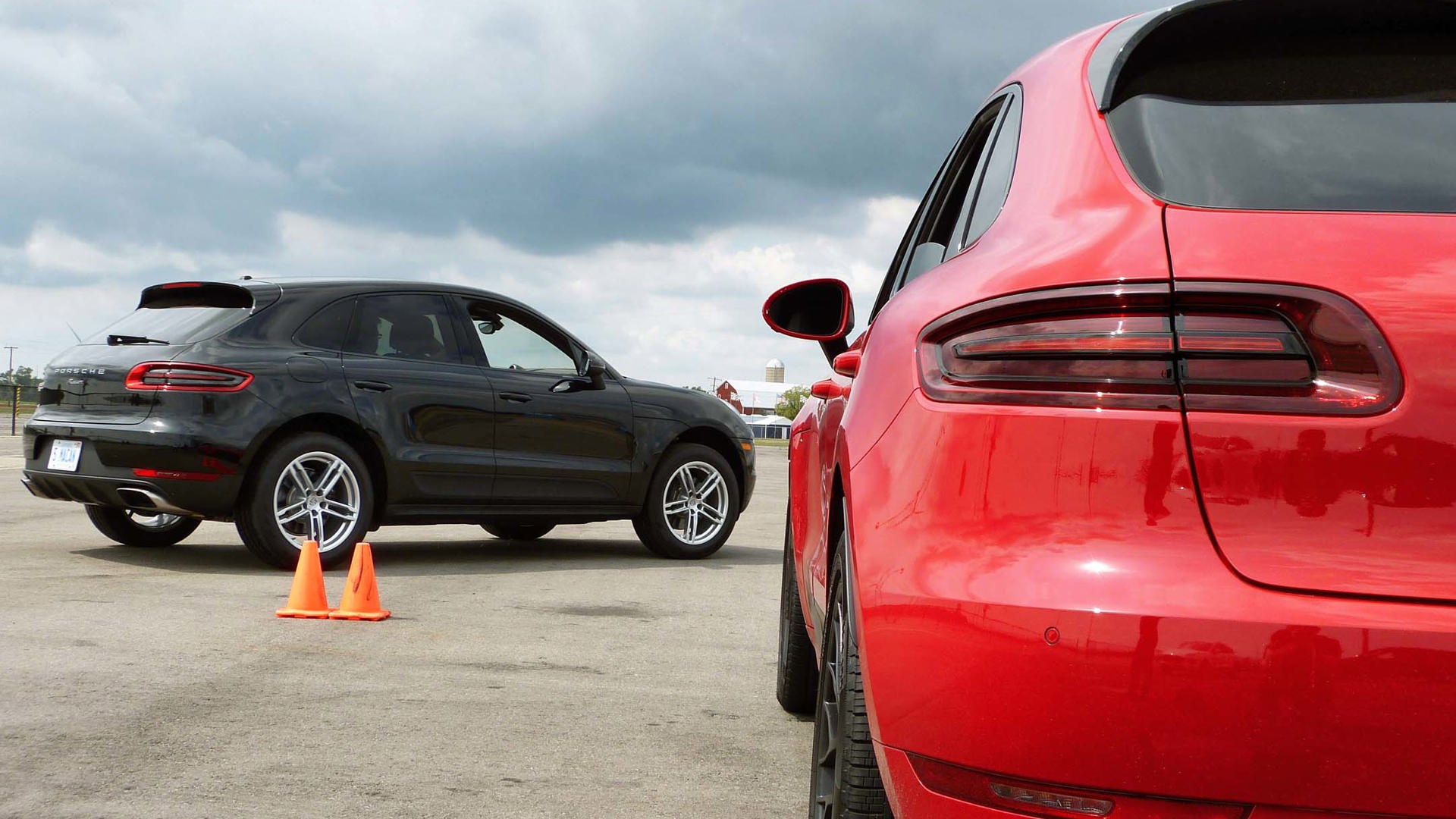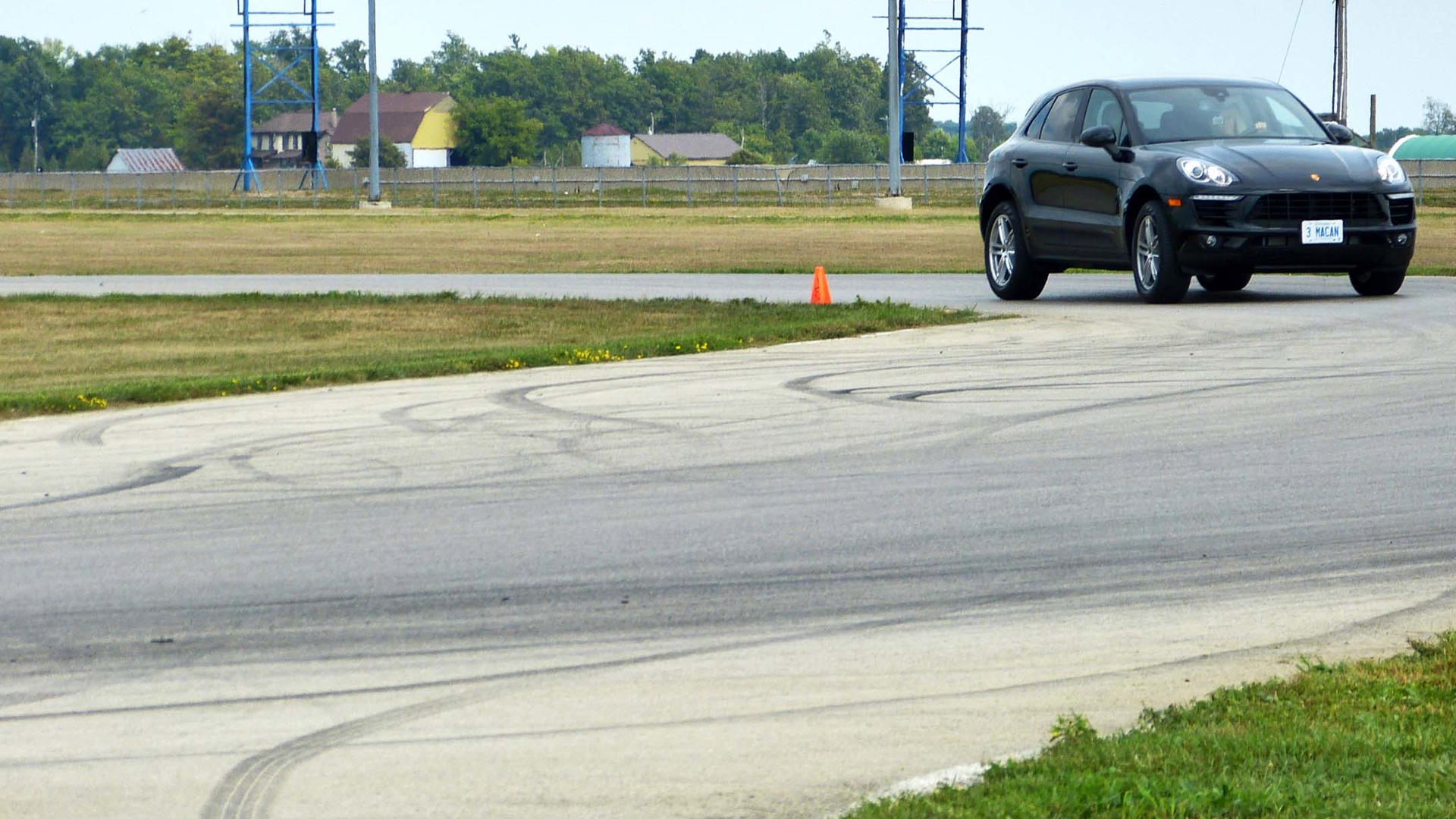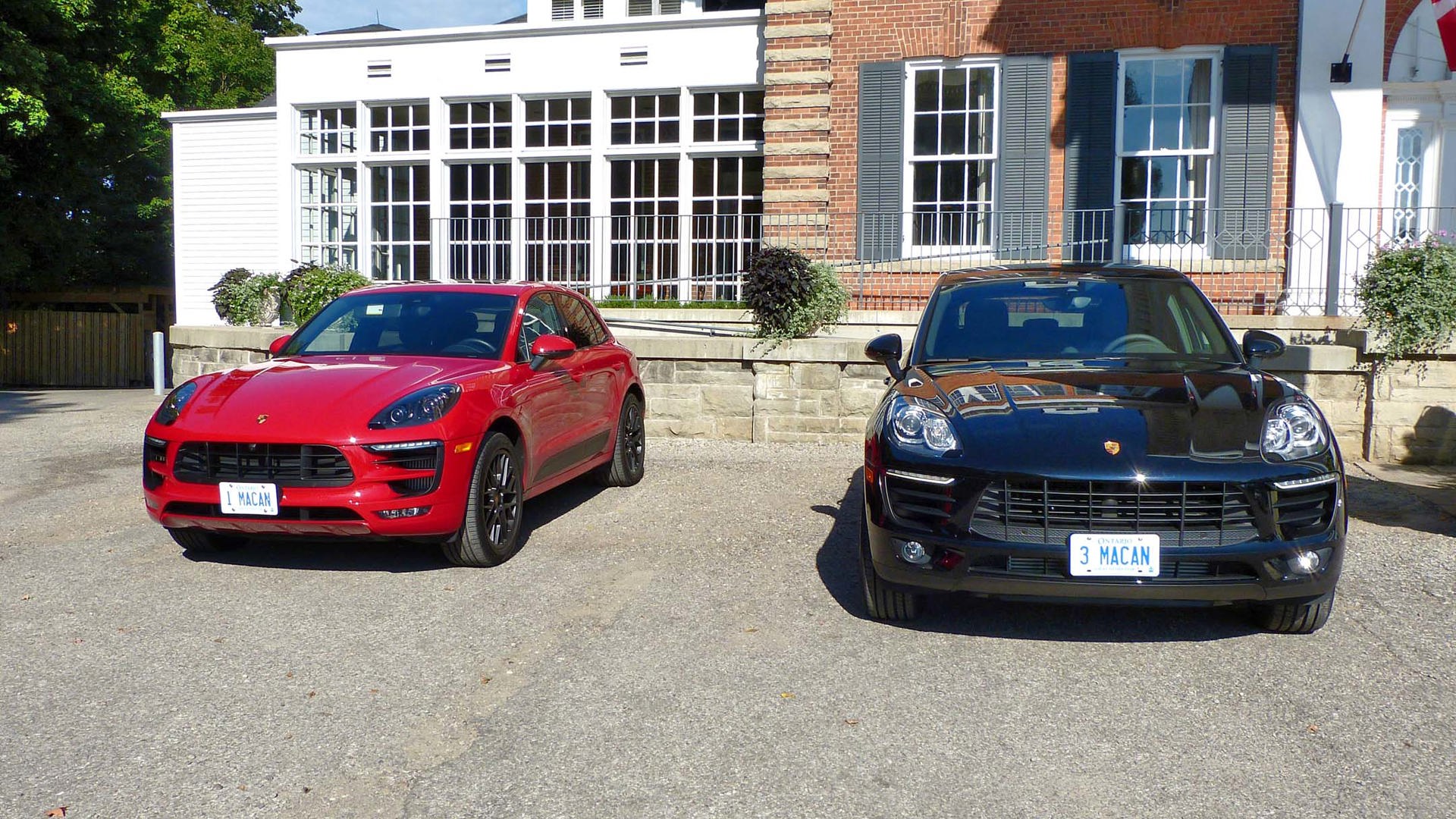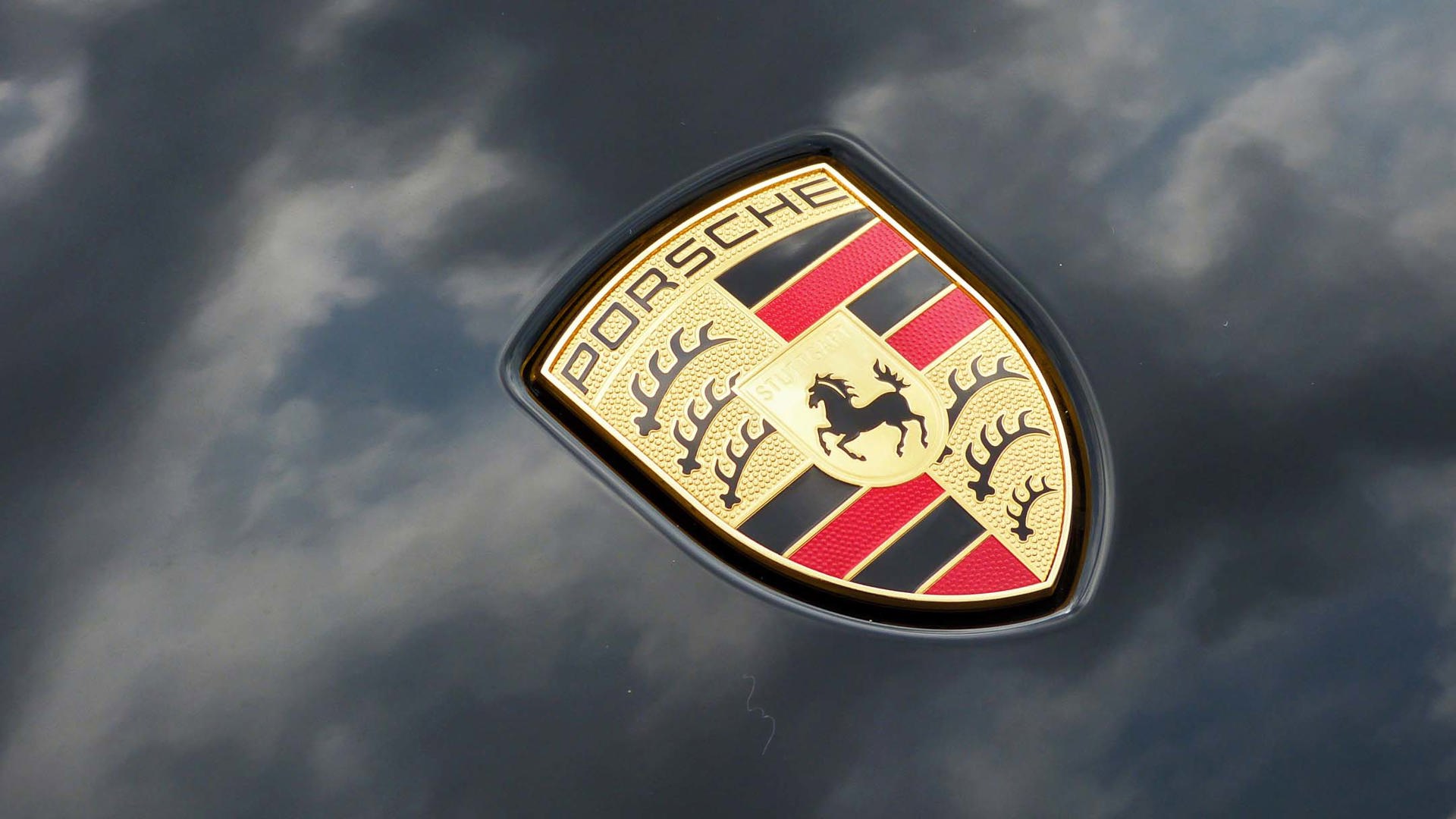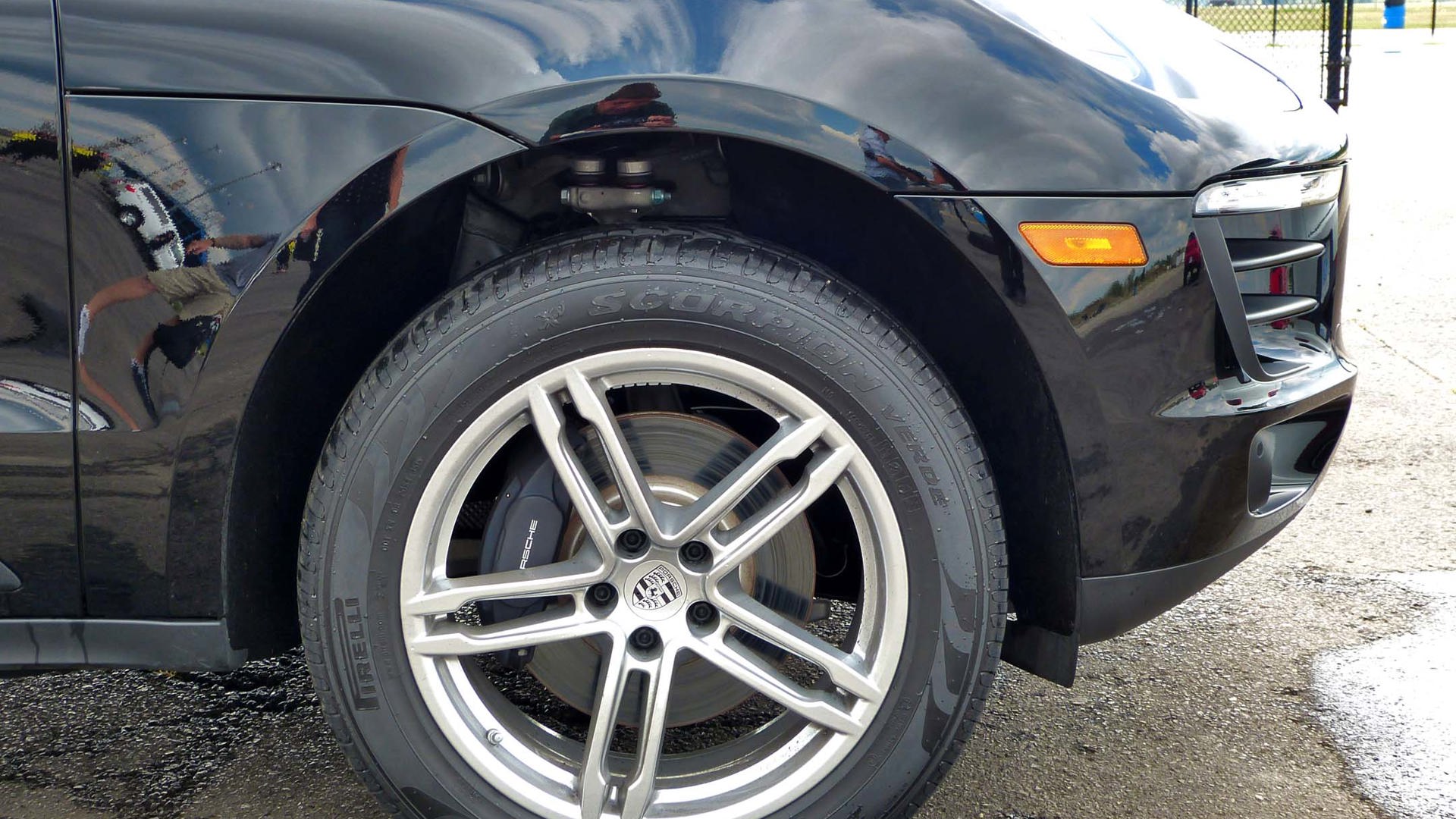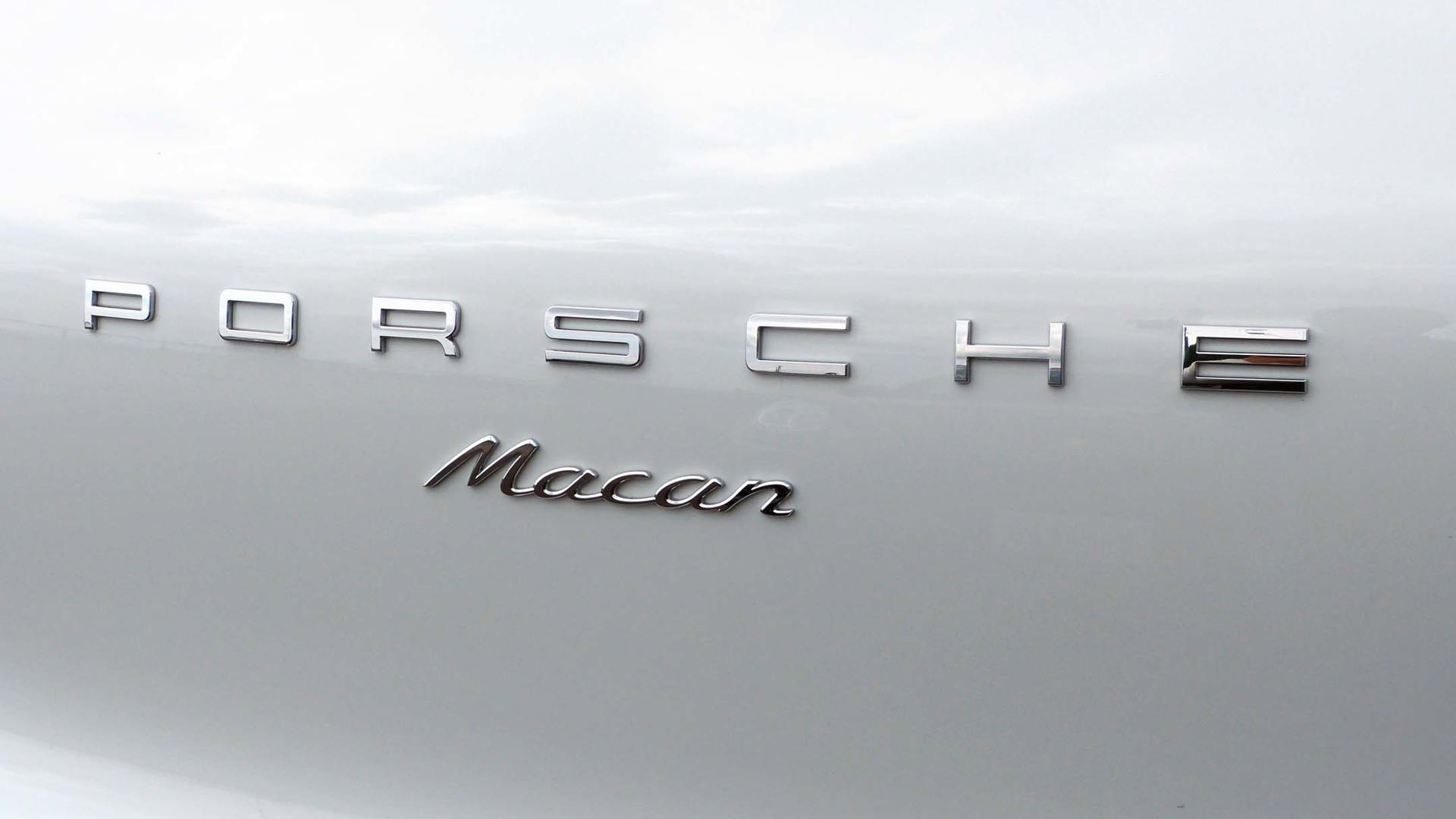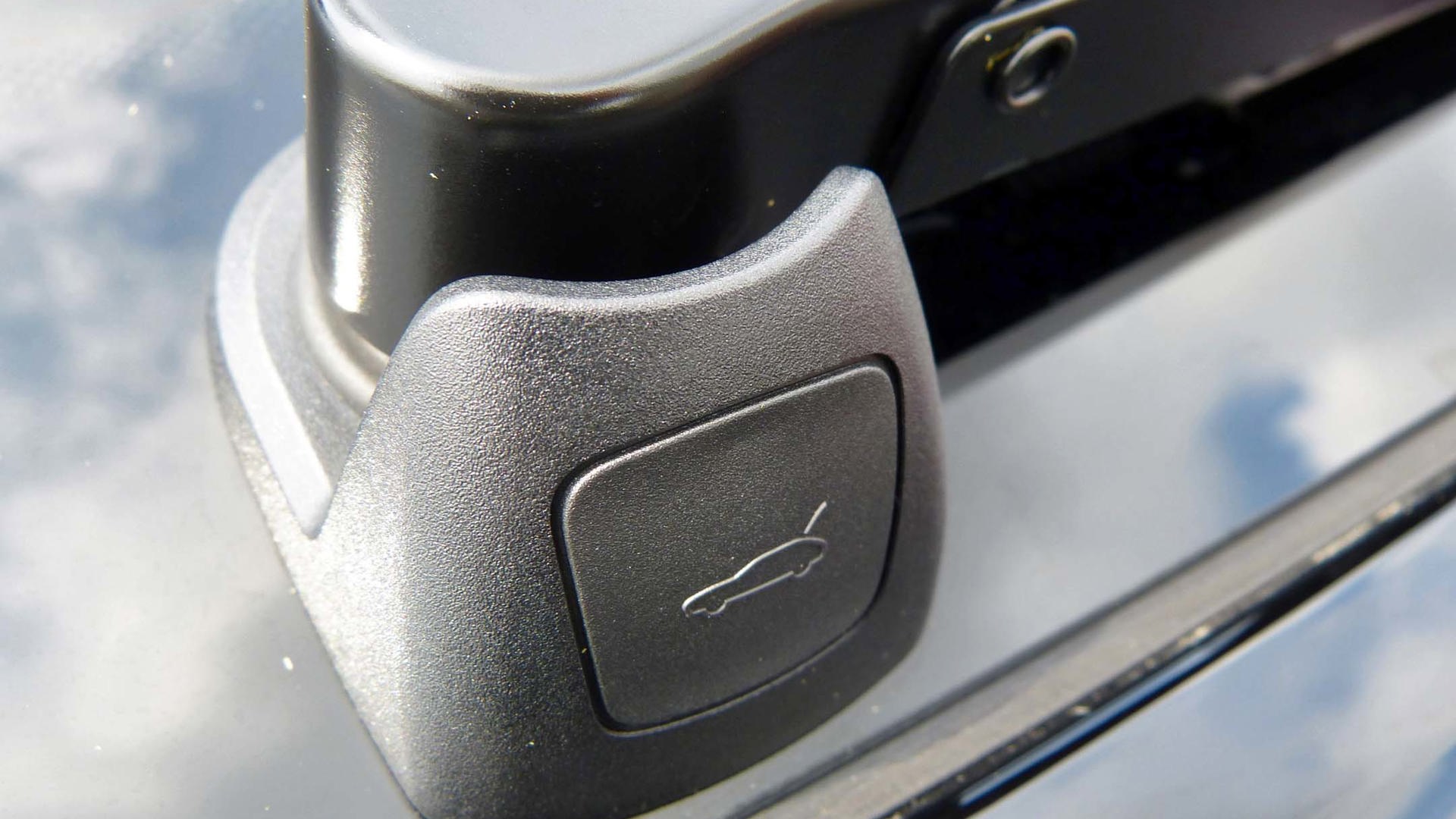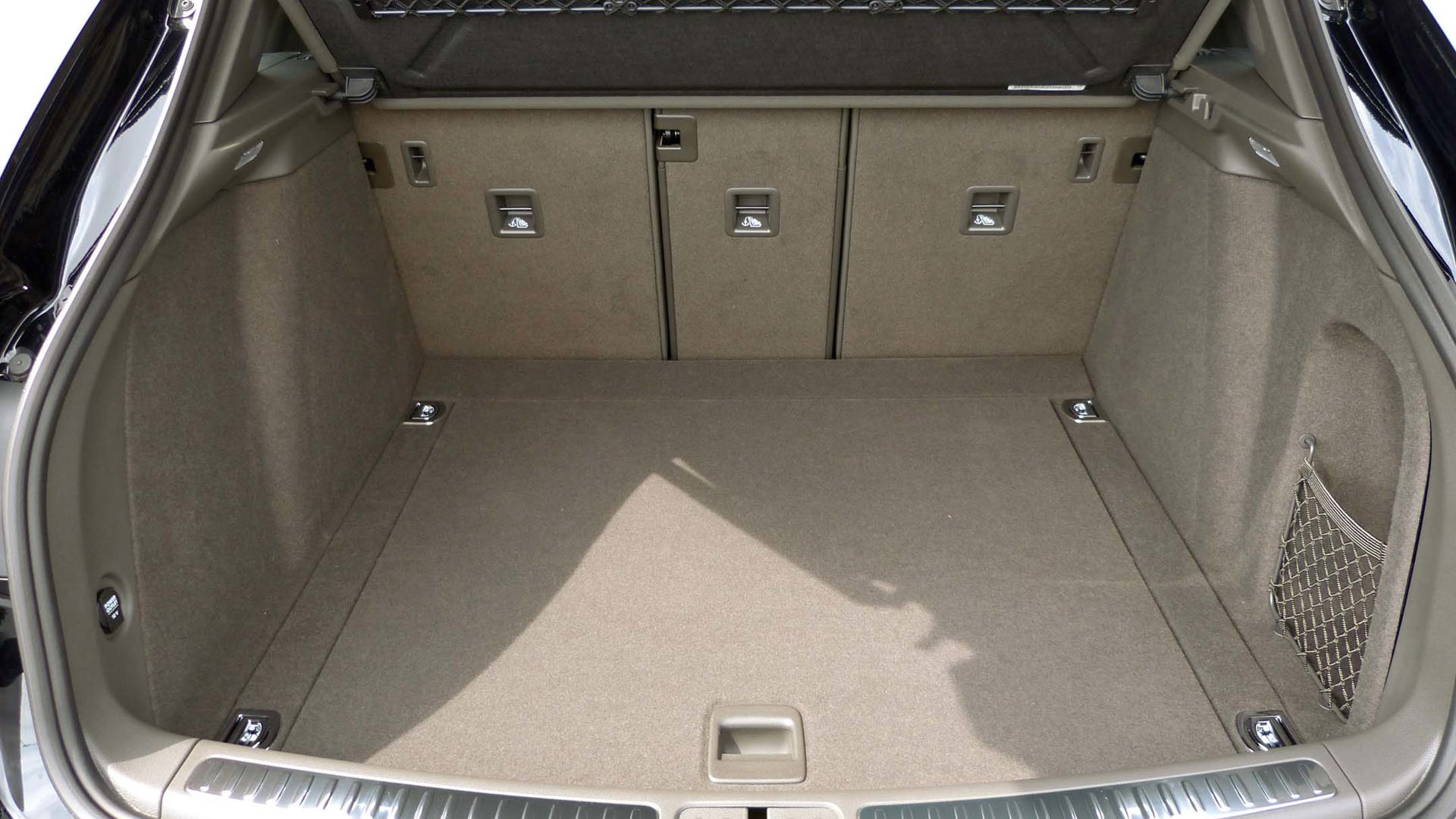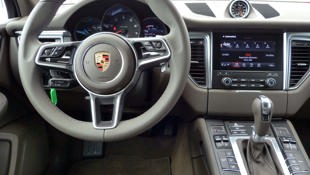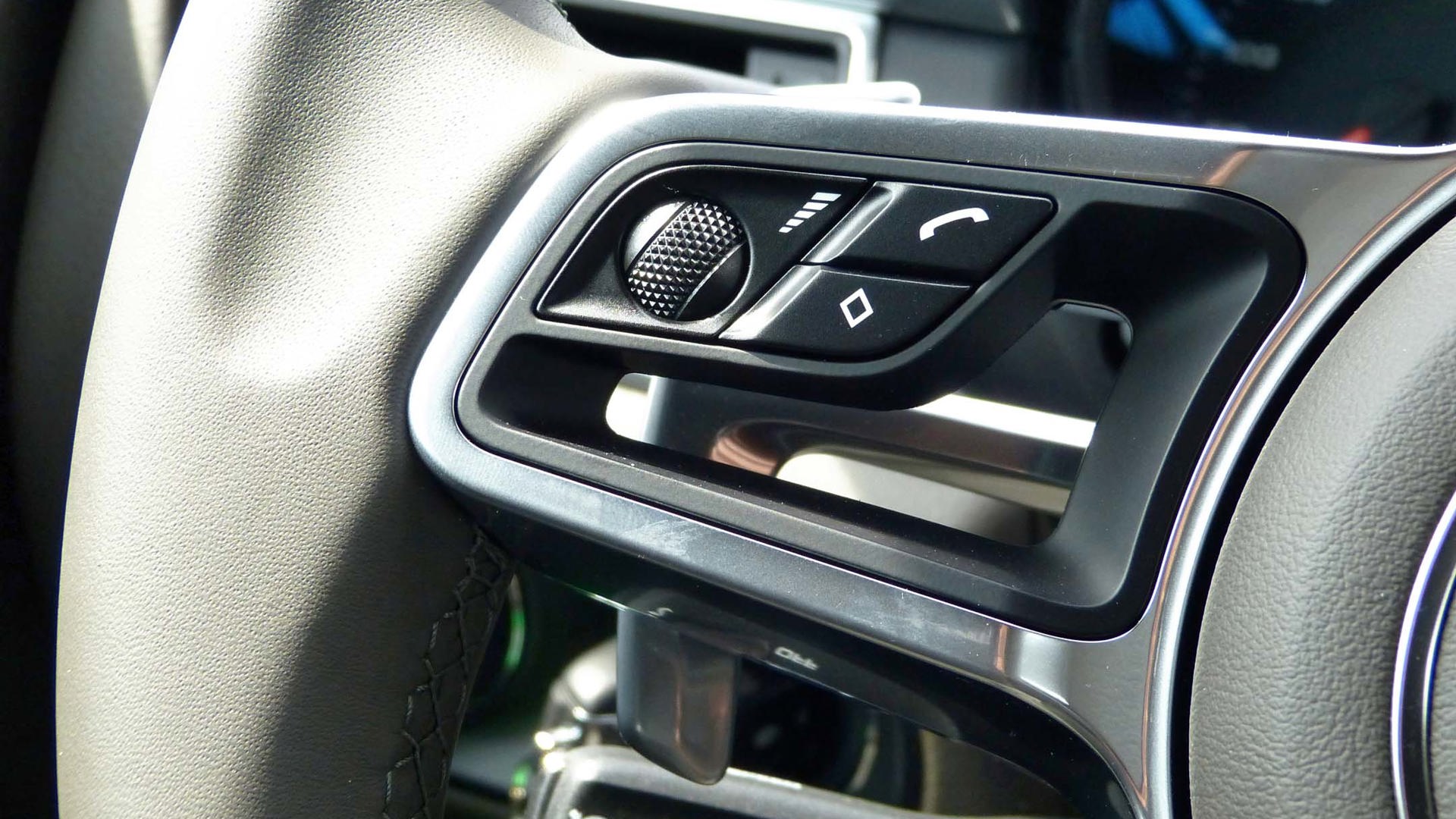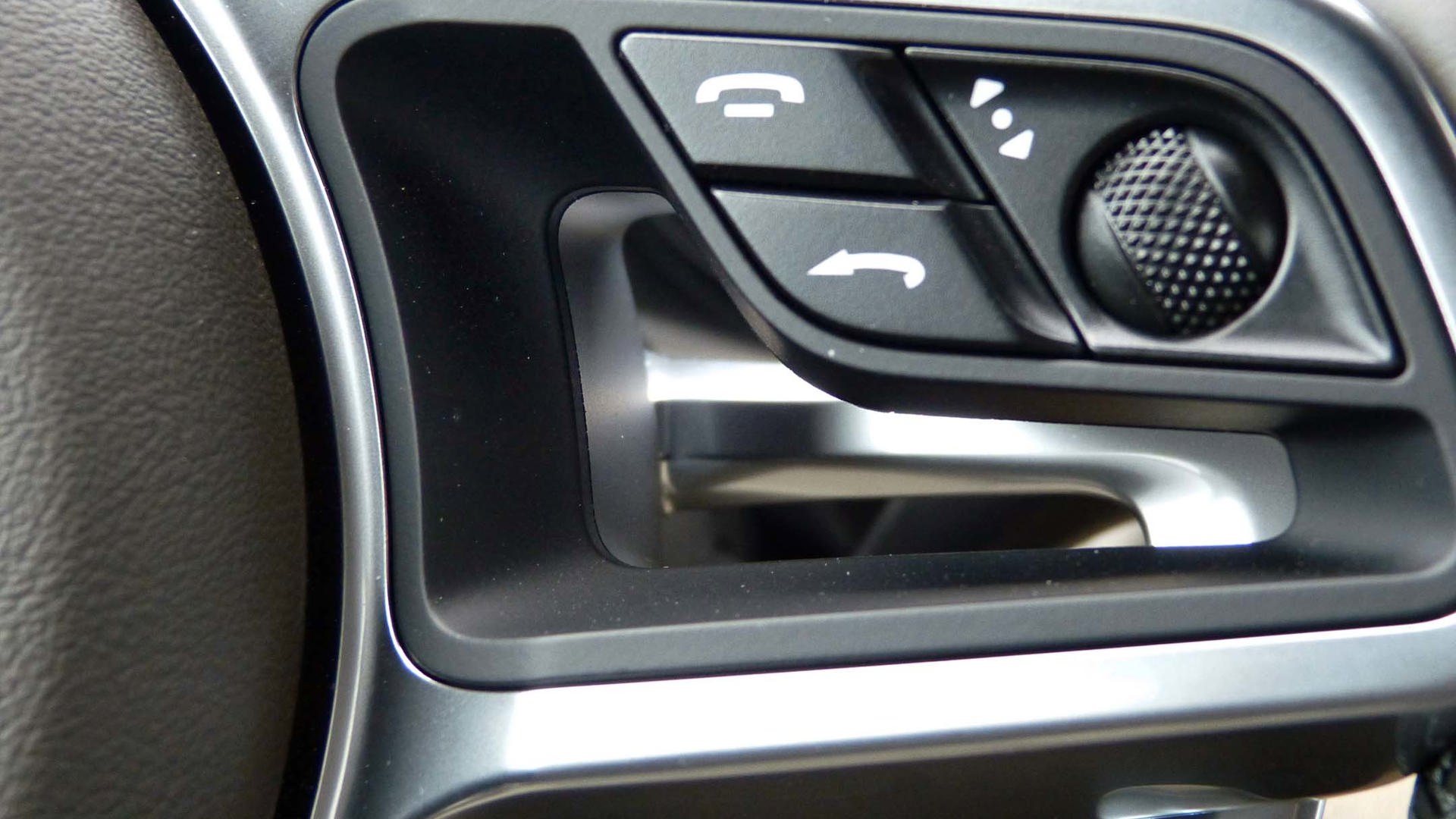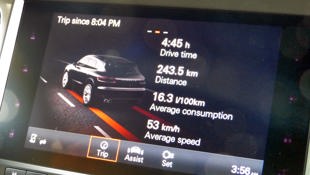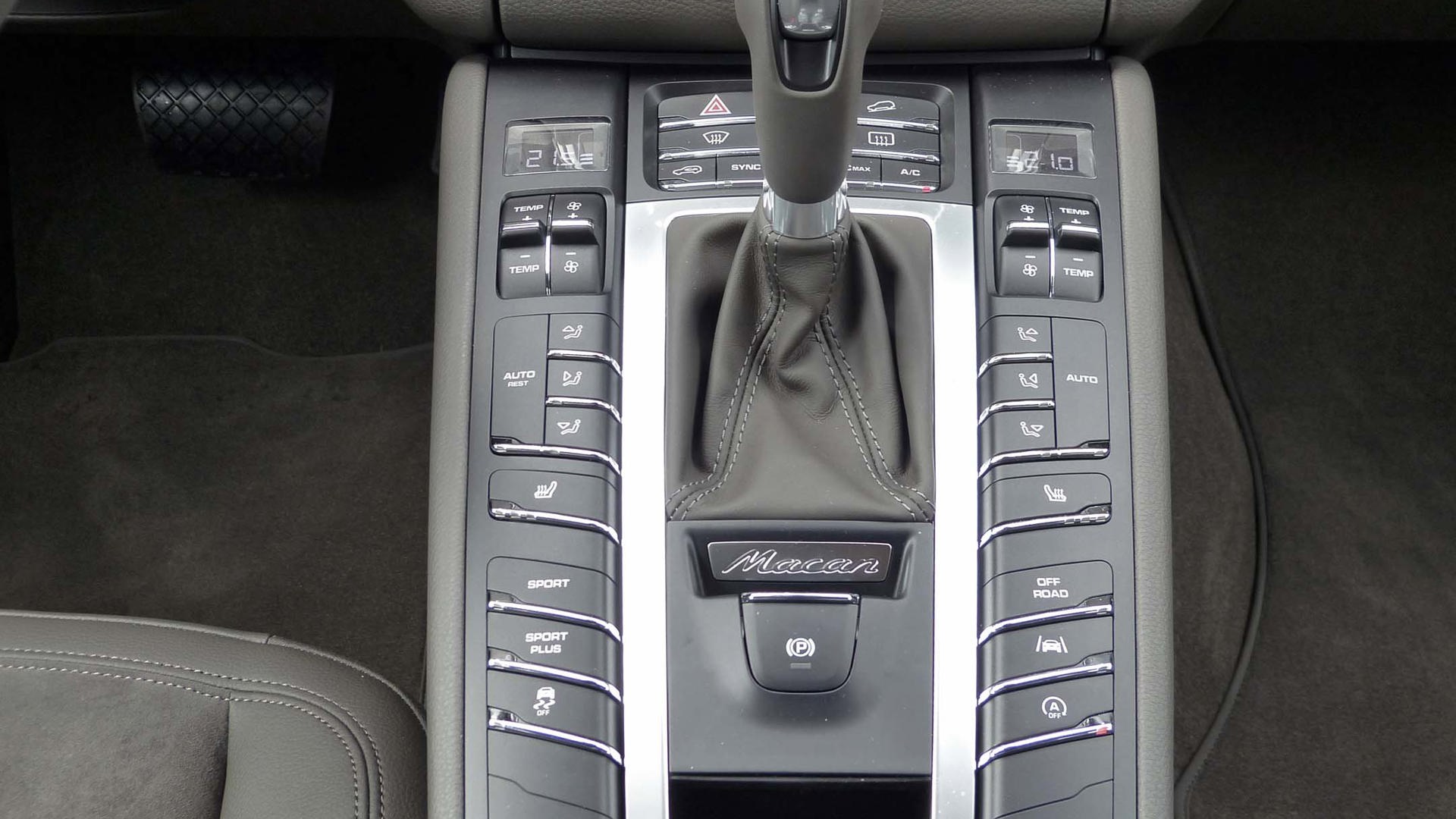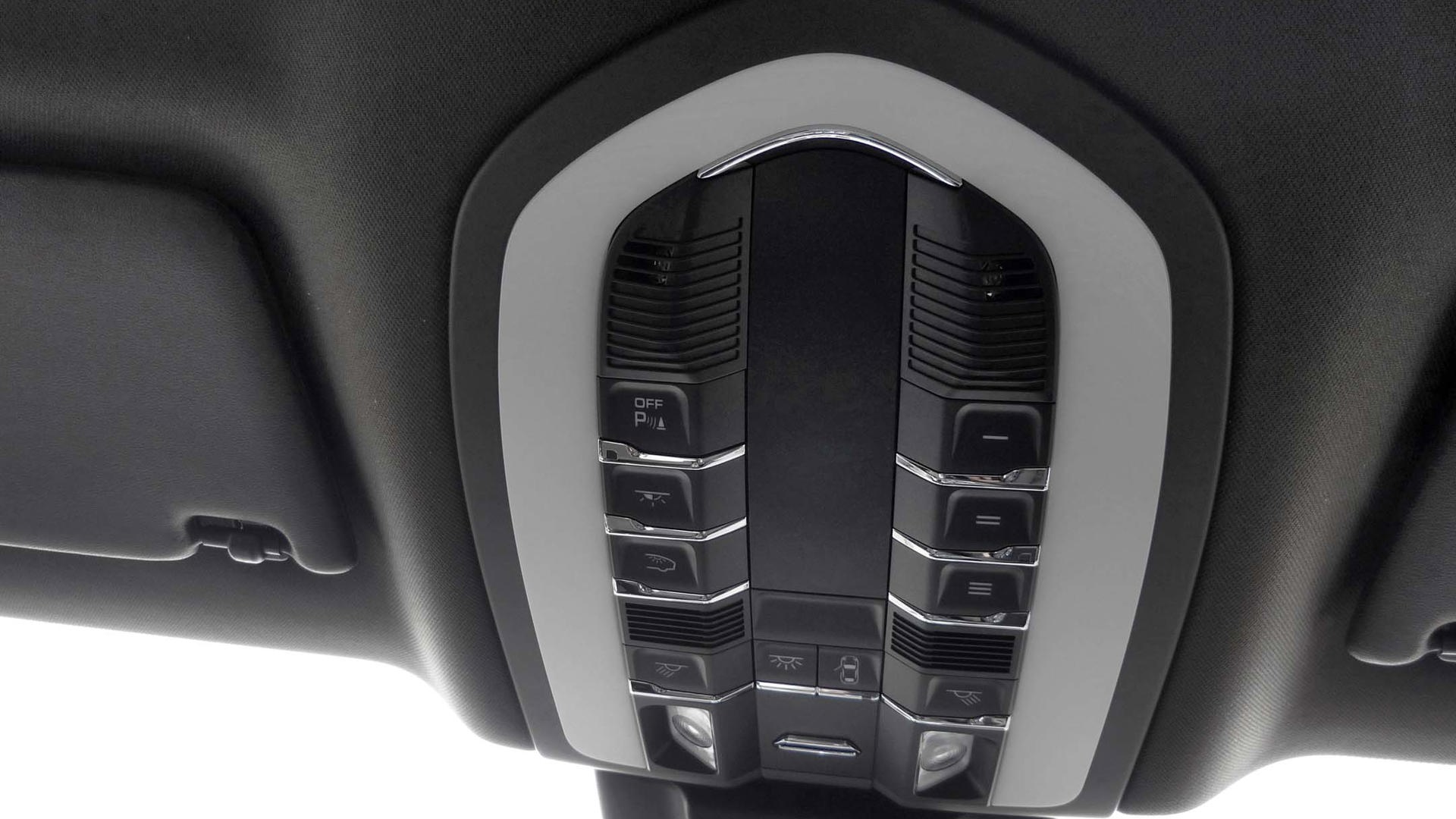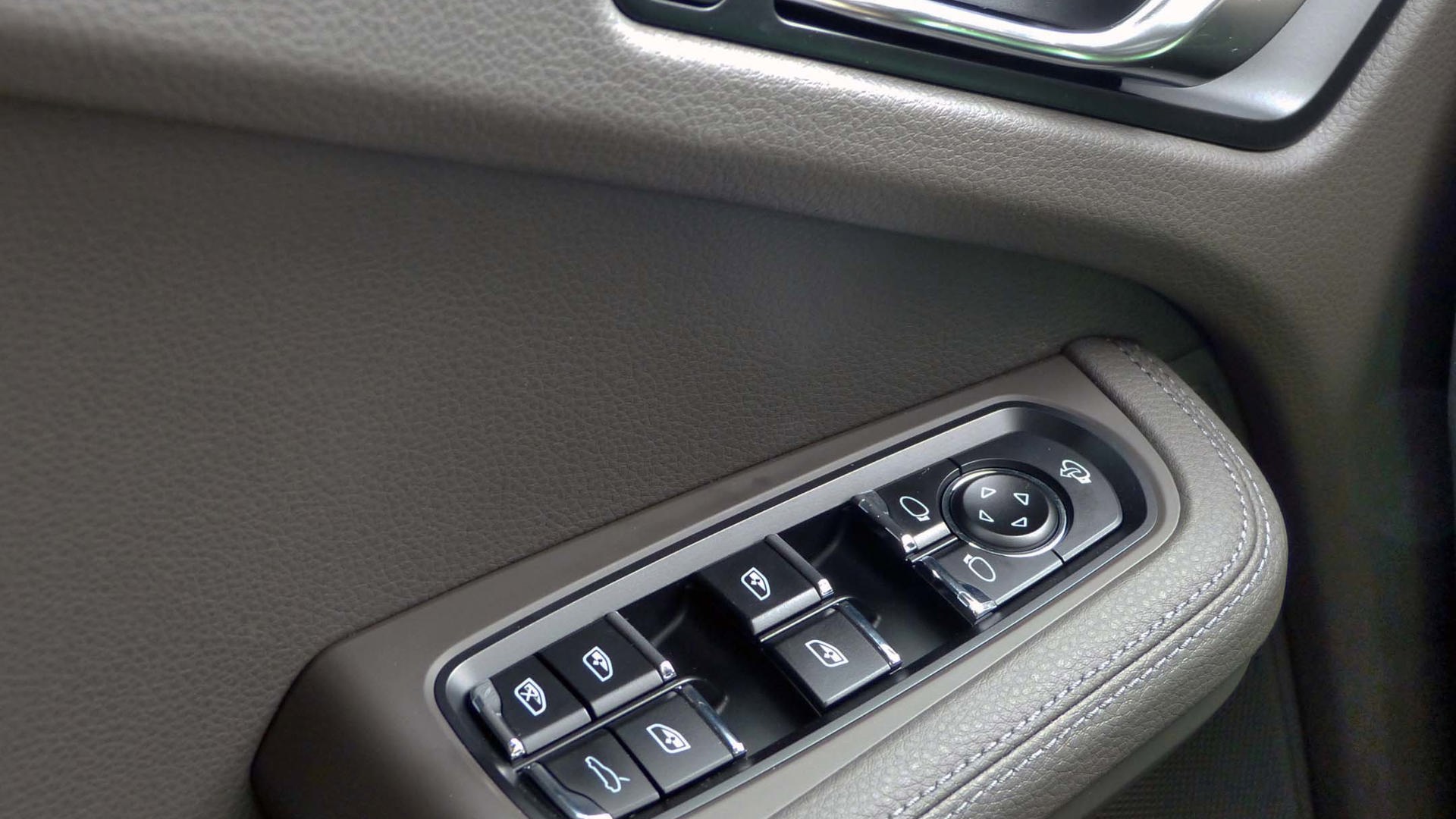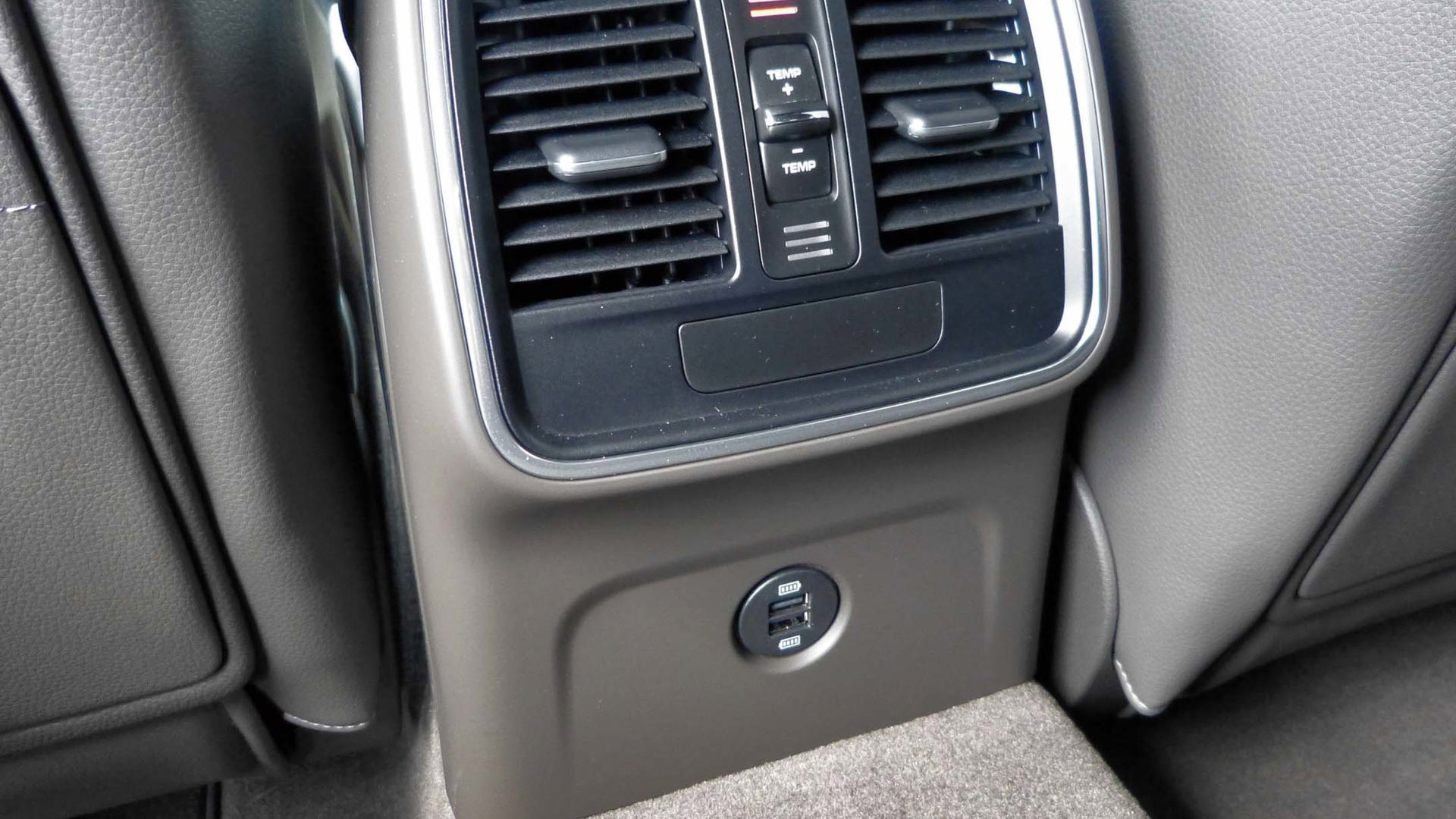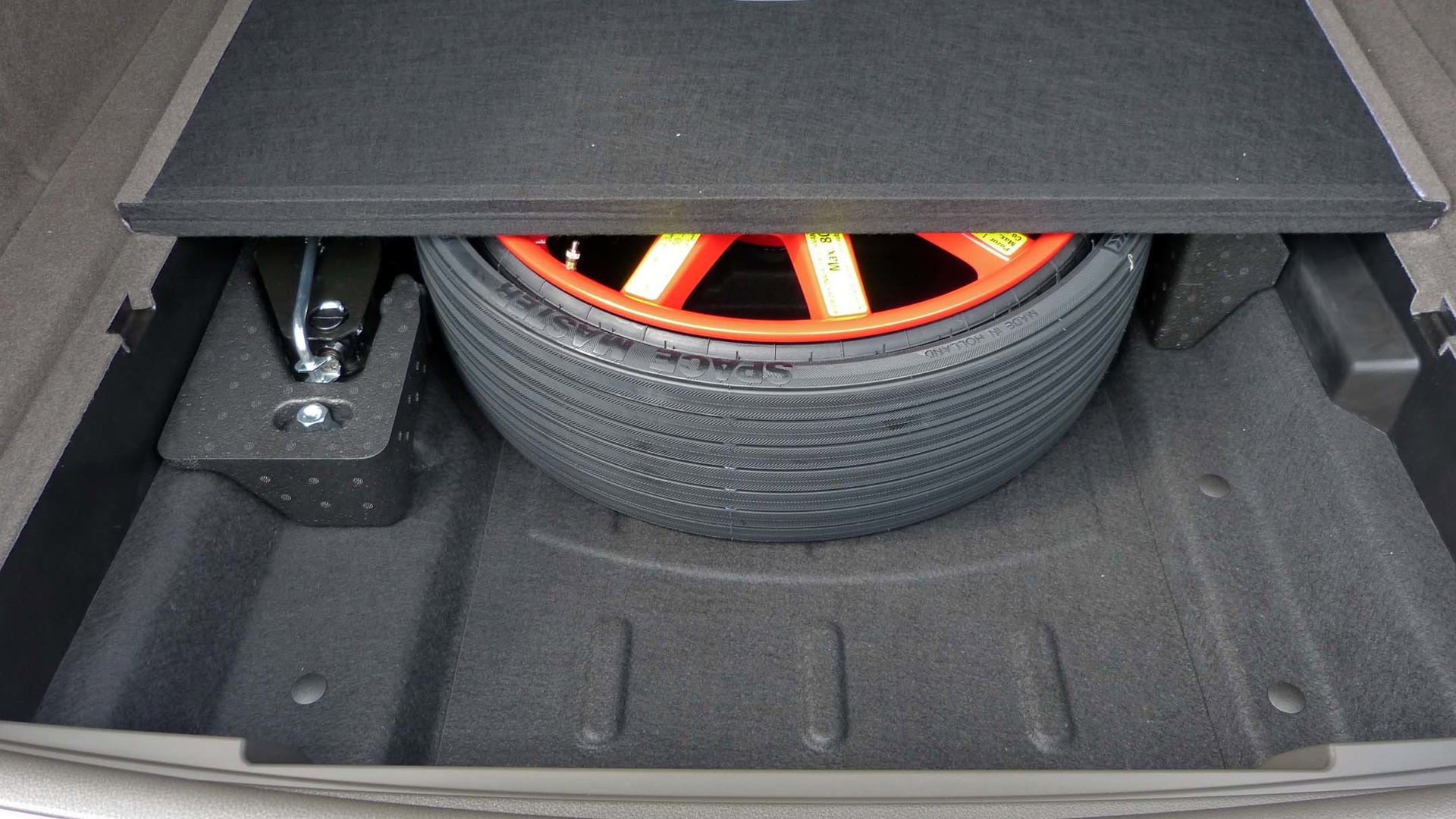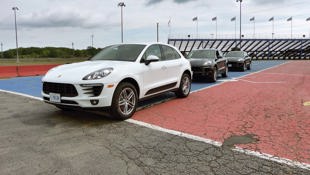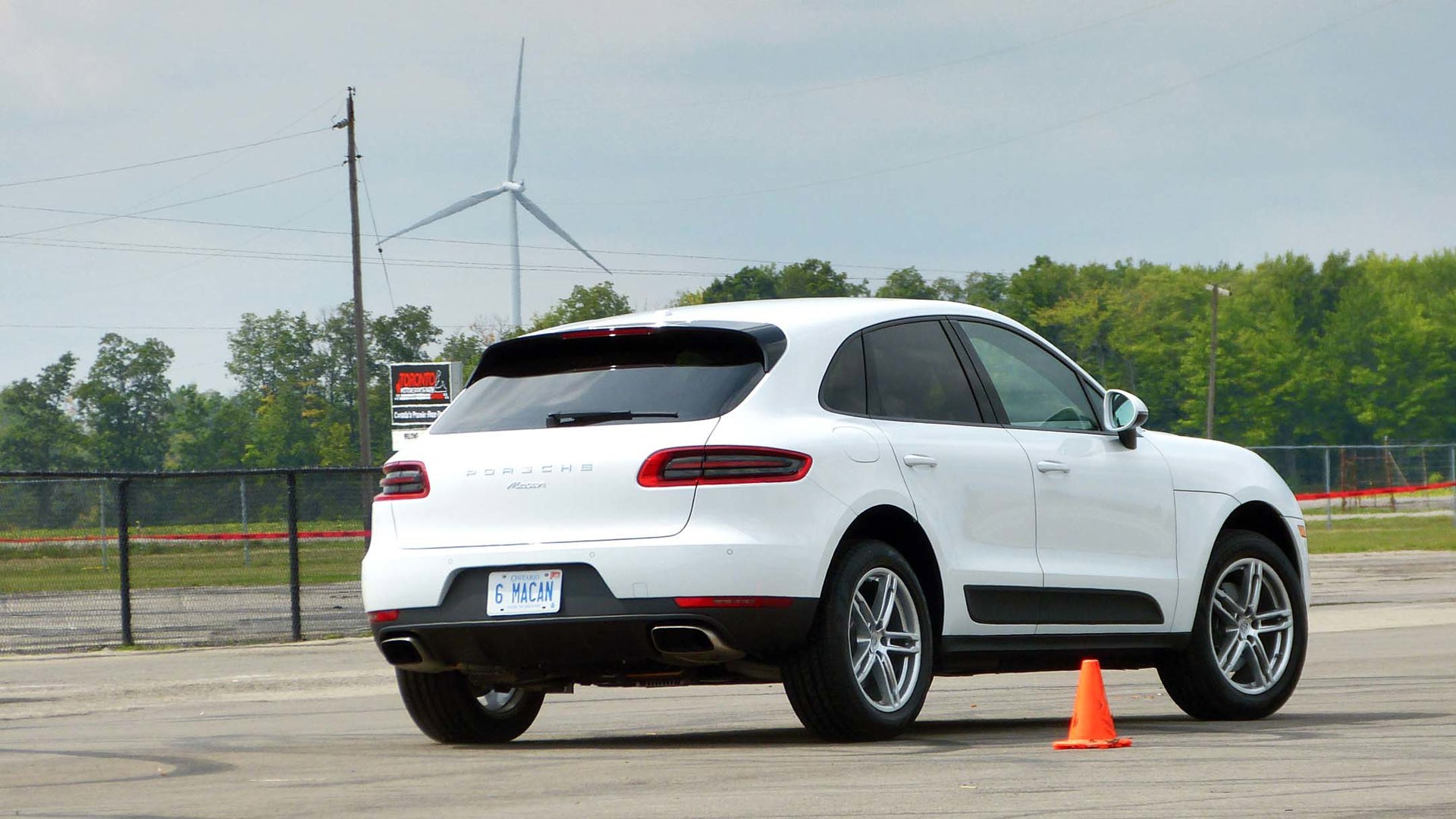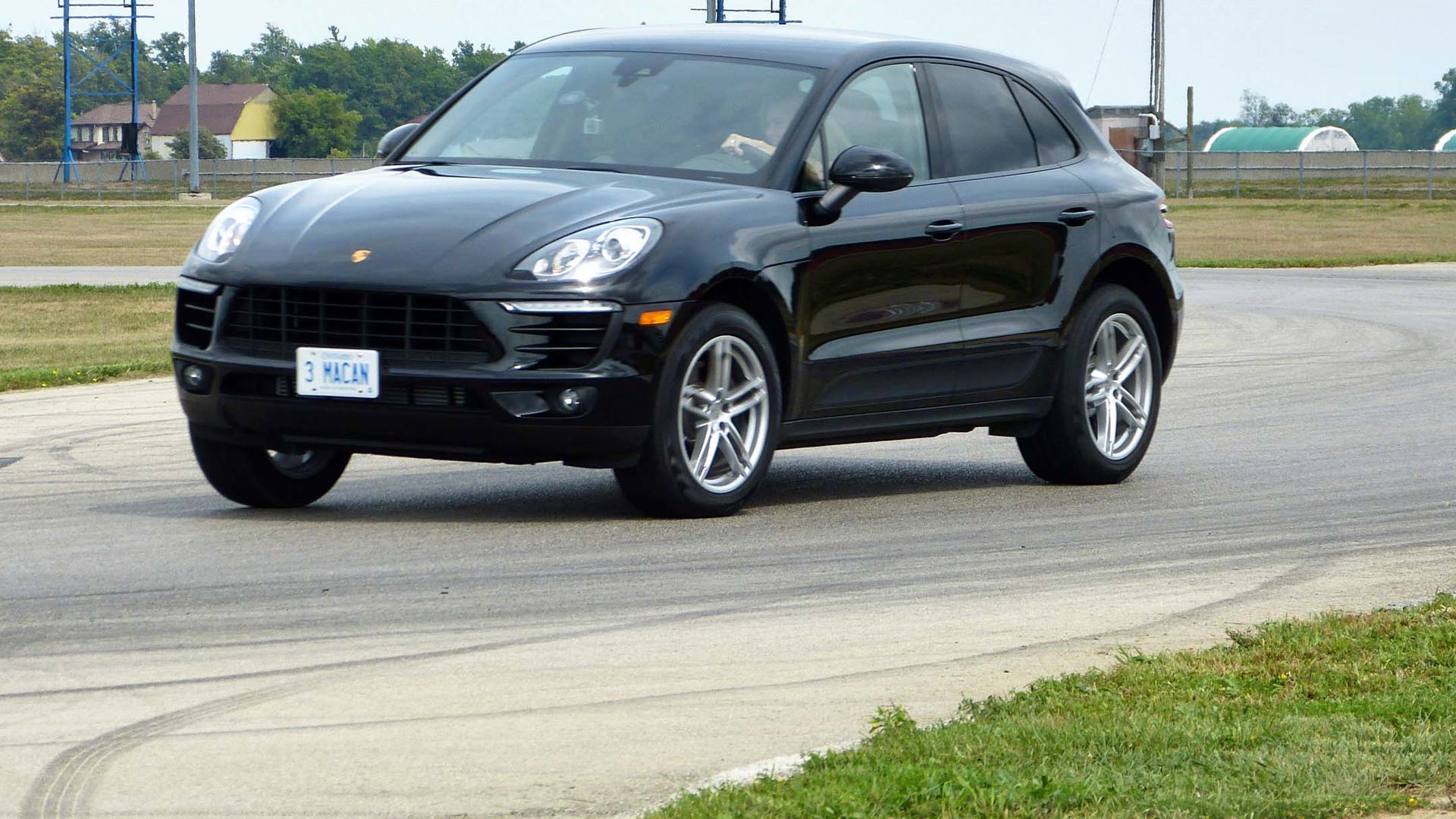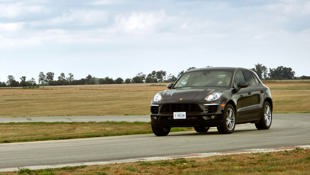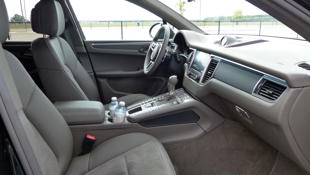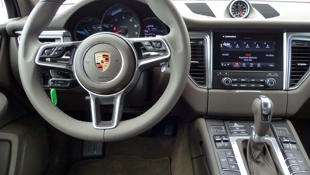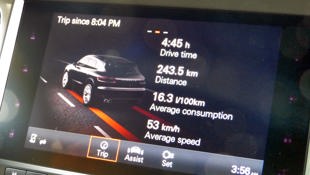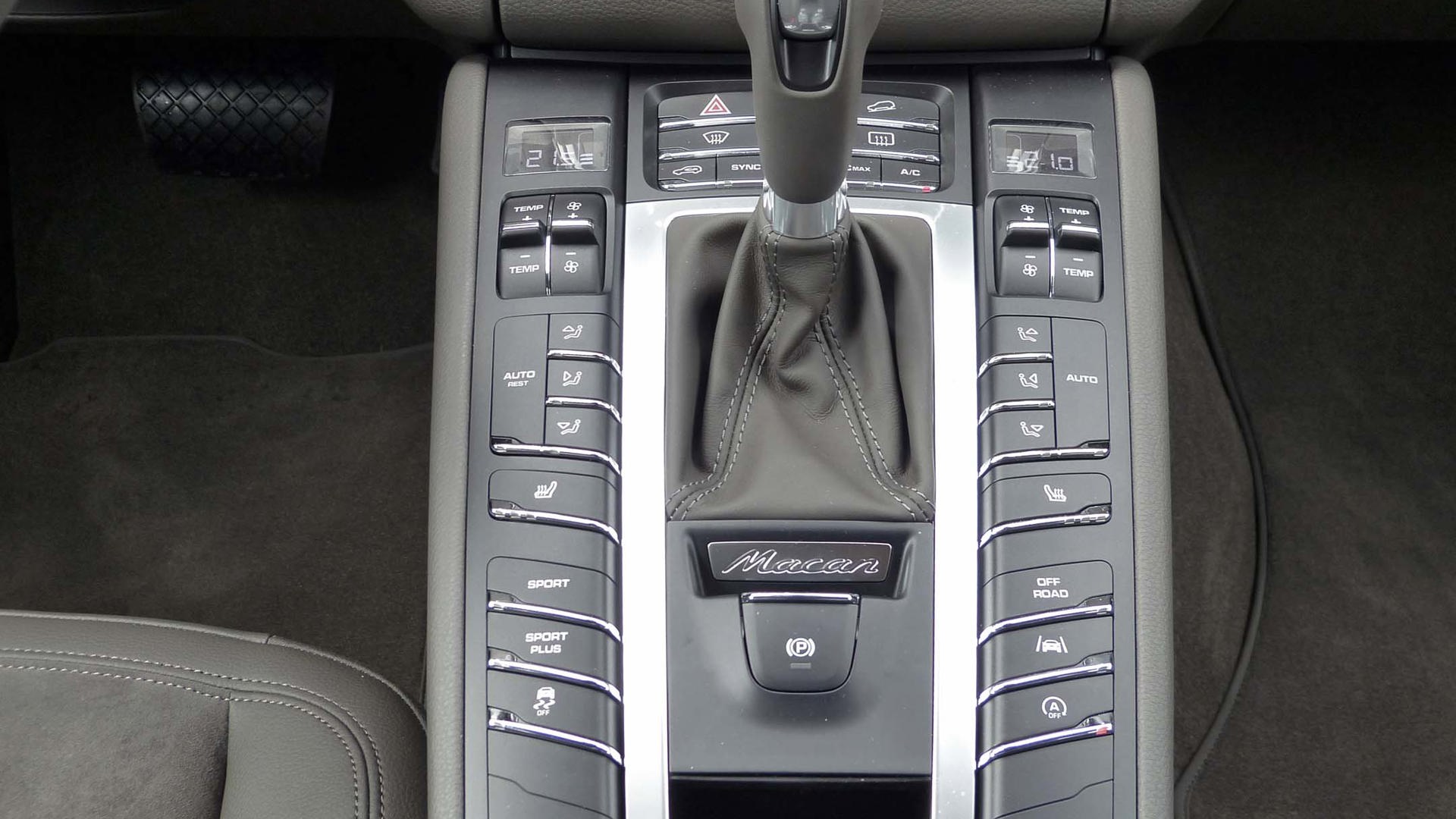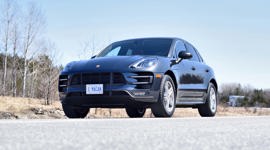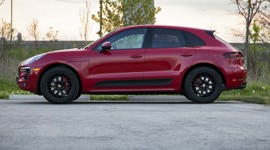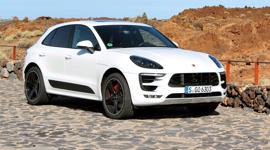Years after Porsche debuted the Macan, Porsche is finally selling a Macan.
The four-cylinder was every bit as capable of carrying mid-corner speed, if not more, courtesy of less weight and better weight balance.
2017 will be the first year the German sports car brand produces a Macan. Seriously.
Sure, you could have bought a 2016 Porsche Macan Turbo, or a Macan GTS, or a Macan S – but not a Macan. Until now. Equipped with a 2.0L turbocharged four-cylinder and priced well inside the middle-manager pricing bracket, the new base Macan might be the most proletarian of all Porsches.
But Porsches were not meant to be proletarian. Enter the suspension magicians hiding deep in the bowels of Porsche HQ. The Macan has always been a physics-defying weapon in the corners. Its size and shape belie an athletic soul that is eager to attack any obstacle with gusto.
Chasing a Macan GTS around the track, the four-cylinder was every bit as capable of carrying mid-corner speed, if not more, courtesy of less weight and better weight balance.
You can even back it into the corner under braking, letting the aggressive and rapid deceleration assist in the car’s rotation. In fact, the only way in which I attacked the Cayuga circuit any differently in this car compared to other sports cars was the amount of abuse I could deal out to the curbs. The higher ride height and slightly longer suspension travel compared to a regular Porsche had me throwing the Macan across the top of the curbs like I was trying to squash them back flat – and it was the curbs crying for mercy long before the car did.
Before too many laps I was even using the curb to help rotate the car, playing with them to kick the back around mid-corner and revelling in the predictability of the response from the chassis. And that’s before you add the trick Porsche suspension add-ons like Porsche Active Suspension Management ($1,560) or Air Suspension with PASM ($3,140). It’s also without the $1,700 torque vectoring or the available 21-inch wheels – though in fairness they might have hampered handling more than helped.
The paddle shifters call up gears in rapid succession, Porsche’s PDK doing its regular job of embarrassing manual enthusiasts like yours truly with cyborg-like precision and speed. The turbocharged 2.0L four is rorty and rapid with 252 hp and 273 lb-ft of torque, hustling the 1,770 kg SUV to 100 km/h in 6.5 seconds. If you’re curious, that’s 1.1 seconds slower than the previous base Macan, the Macan S.
The S, incidentally, is the Macan Porsche expects more customers to opt for.
And while that 252 hp might sound mild-ish, Porsche points out that the Macan generates more power than any other base model in the segment. This statement is true, because the base Jaguar F-Pace uses a 180 hp and 318 lb-ft diesel. For similar money to the base Macan though you can get 340 hp and 332 lb-ft courtesy of the Jag’s supercharged six – it takes a bit more money to access the 340 ponies and 339 lb-ft in the $59,200 Macan S. Having said that, as you walk through the trims, the Macan regularly delivers class-leading output.
Out on the regular roads I realized that Porsche intends not to coddle its occupants in tomb-like silence. The engine is an attention-seeking partner on all drives and Porsche is betting that its drivers will enjoy having the ever-present growl of the little turbo four as a backdrop. This might be the base Macan but it’s no wallflower.
Engine noise aside, the wind noise and road noise is well damped and the Macan is capable of delivering a comfortable and relaxed ride – not that Porsche customers would ever want such a thing.
Visually, the Macan differs from its more rapid and pricey brethren only by the badging (which says simply “Macan”), the exhaust tips and the wheels on the outside. The 18-inch base wheels are upgradable to 19s for $1,890, however, and the dual, single-oval exhaust tips give way to two sets of twin circles when you upgrade to the $1,090 sport tailpipes or the $3,350 sports exhaust. Those changes render the Macan indistinguishable from the other trims.
On the inside, the only differences are a black tachometer, black accent trims and the absence of aluminum door sill trimming.
Indeed, the new, cheaper Macan also brings with it an upgraded 7.0-inch infotainment system, now-standard lane-departure warning and now-standard park assist with reverse camera. Apple CarPlay is also present – though no word yet on Android Auto.
The $52,700 base price includes eight-way power heated front seats, automatic power tailgate, and three-zone automatic climate control. Also standard are Alcantara seats, satellite radio and paddle shifters.
In the end, Porsche’s four-cylinder Macan is much like working 9 to 5. A lot of people hate working. Time working is time away from the family, time away from the TV, time away from all manner of fun and exciting things. Yet working is also the only way to get a roof over one’s head, to feed one’s family. To pay for all those fun and exciting times.
Building SUVs is the automotive equivalent of going to work. Even when you really enjoy working, it’s still not the same as “not working” – unless you make it so.
It’s fair to say that given the opportunity Porsche would churn out 911 after Cayman after 911 and be perfectly happy, but at some point you have to go all 21 Pilots on the thing: “Wake up you need to make money.”
So Porsche has applied itself to building SUVs. Well, not quite. Porsche has applied itself to building sports cars that are roughly the same size and shape as an SUV. In the Macan, they’ve achieved that mission.
It truly is a sports car in SUV clothing. It’s like vegetables dressed up fancy for the kids to eat – only actually enjoyable. And the new base Macan proves Porsche can serve up a tasty plate even without the fancy sauces and condiments.
Pricing: 2017 Porsche Macan
2017 Porsche Macan: $52,700
2017 Porsche Macan S: $59,200
2017 Porsche Macan GTS: $73,100
2017 Porsche Macan Turbo: $85,800
